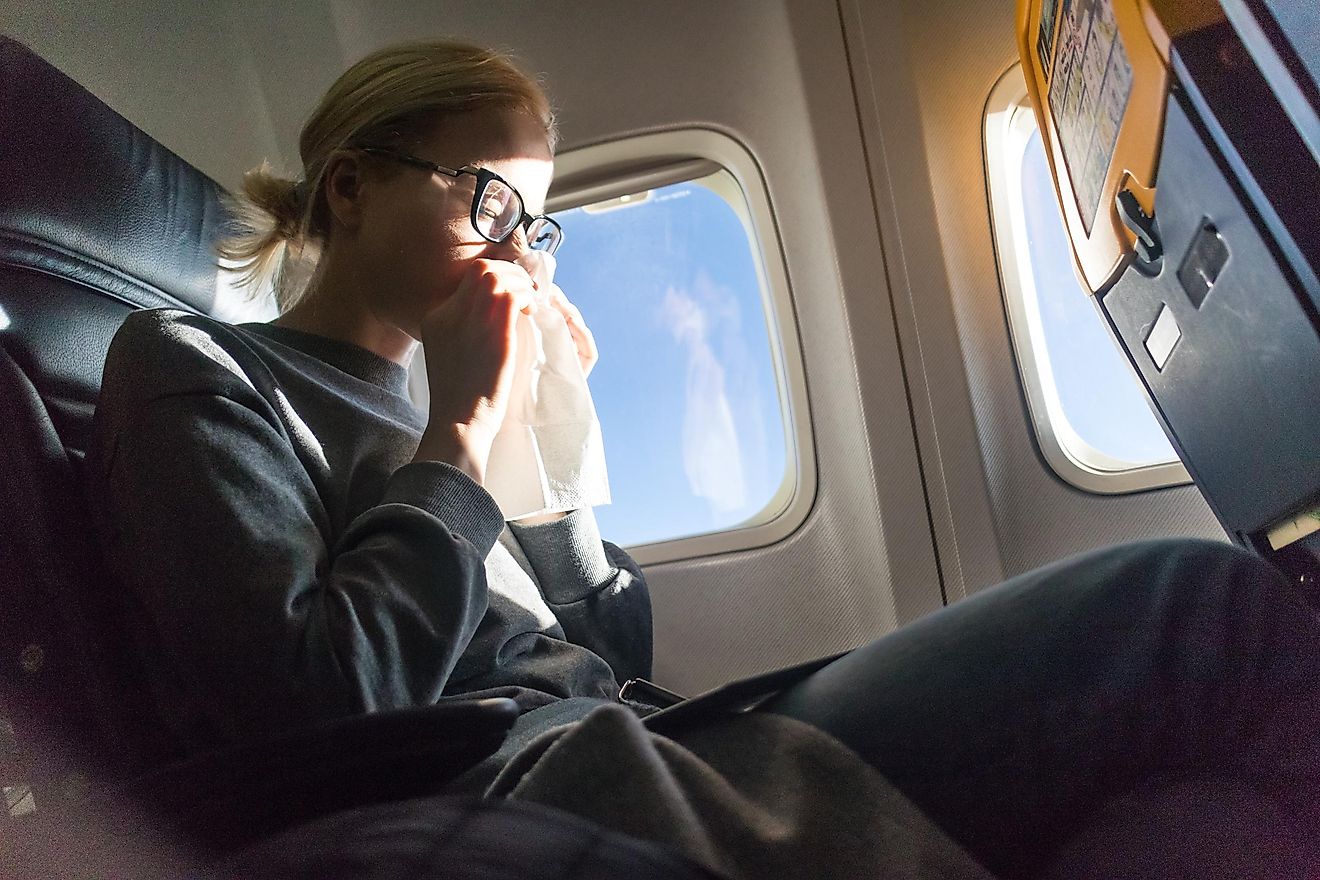How To Avoid Getting Sick On The Plane

Statistically, one out of five people gets sick after traveling on the plane. Most recent news about an outbreak of a fast-spreading new coronavirus, nCoV, which has already made its way to Thailand, China, Japan, and the United States has become a good reminder to share some fundamentals on air travel and infections.
Studies vary in regards to the numbers, allowing 20 to 113 times higher chance of getting the flu on the plane than during an ordinary day. They agree that the possibility is much higher, though. Very close quarters shared air, and extremely low cabin humidity have been identified as potential reasons for this situation. By being responsible for your own protection, you protect others as well.
Centers for Disease Control And Prevention Tips
The US CDC has regularly published a recommendation on how to avoid picking up coronavirus, flu, or any other infection while traveling by air. Many people feel awkward about wearing masks or using wipes in public. However, it is awkward not to do that, there is absolutely nothing undignified and shameful about maintaining basic hygiene and protecting your health: quite the opposite. You are also protecting everyone who will be in touch with you after your trip.
- Avoid close contact with sick people. Please remain polite and understanding, and simply put a bit more distance between you (choose another seat in the waiting area, for example). It is also completely fine to excuse yourself from having a conversation or interaction.
- Wash hands often and thoroughly with soap and running water. Use an alcohol-based sanitizer in case soap and water are not available. Clean your face and nostrils with special wipes.
- Make it a habit not to touch or rub your eyes, nose, and mouth with unwashed hands.
- Absolutely never eat at the airport with your hands unwashed: you are eating everything that was on that elevator handle at the airport and the toilet water tap button. Yum!
- Have your hand sanitizer or wipes with you in easy access like a clip on your bag or purse. If you need to clean your hands, digging inside your purse might not be the best idea. The CDC’s recommendation is 60% alcohol sanitizers.
- According to CDC, the dirtiest contact points are armrests, toilet seat, buckle on the belt, overhead air went, your tray table, entertainment center screen, and bathroom door handle. Simply wipe them with sanitary wipes at the beginning of your trip.
- Bring a face mask and wear it. Nasal filters may be more discreet, but we breathe in through the mouth as much as we do through the nostrils, so they might not protect you sufficiently.
- Choose a window seat and do not walk in aisles until the flight is over, if possible. Several recent studies have found that people sitting in the aisle are exposed to several times more airborne germs due to the nature of the airflow in the cabin.
- Passengers within two seats or one row of someone with a respiratory illness are 80% more likely to contract a disease. Ask the flight attendant to allow you to change your seat.
- Hand sanitizer, wipes, and masks are very cheap: for less than $5-$10, you are potentially avoiding costly treatment and loss of productivity (or spoiling your long-awaited vacation).
Do’s And Don’t For Not Getting Sick After The Plane Travel
Stay hydrated. The humidity of the pain air is much lower than normal, which turns your mucous membranes, your first line of protection, less effective. Sipping water and the simplest nasal mists will help you to keep them moist and functioning at their best.
Wear face masks to prevent getting infected. Masks have evolved a lot, mainly thanks to China, Japan, and South Korea. There are now silky and comfortable, developed for more extended wear with in-built ventilation filters.
Now for the gross bit. Do not touch seat pocket, do not take anything out of it (magazines, leaflets, etc.) and do not place your own items there. Flight attendants confirm that people use these pockets like trash bins for used wipes and even dirty diapers. Unlike with trays or seat handles, cleaning the pocket with wipes have been proven ineffective. So just do not touch it.
What To Do If You Are Sick Yourself
The most important recommendation is to avoid traveling if you have an infectious disease yourself. You do not want to be responsible for possibly vulnerable people getting sick (or getting stuck in a quarantine area if your symptoms are similar to the list the airport staff is on alert for). If you can delay the trip - please do so.
Fees for changing your flights is a consideration for many of us. The CDC recommends to always to buy travel insurance for these situations, it can be incredibly cheap these days. But if it is too late, call the airline’s customer service and explain the situation. The staff is just as interested in preventing the airborne infection from spreading on their flights, so they will be willing to help and would waive the change charges most of the time. You might need to offer a note from your doctor that you carry an airborne disease to get a fee waiver.
We understand that sometimes the trip is unavoidable. If you are traveling for your own treatment or you are going back to your family, please wear a mask and wipe off hands as much as possible. Do everything after your interaction with the seating or handles the same way you do it before.
Wherever you travel, stay safe and healthy!











